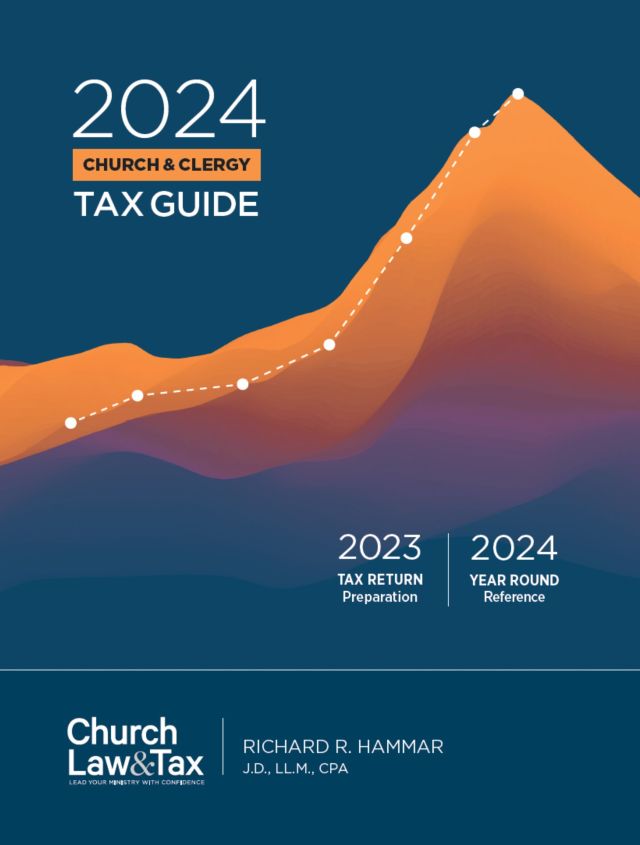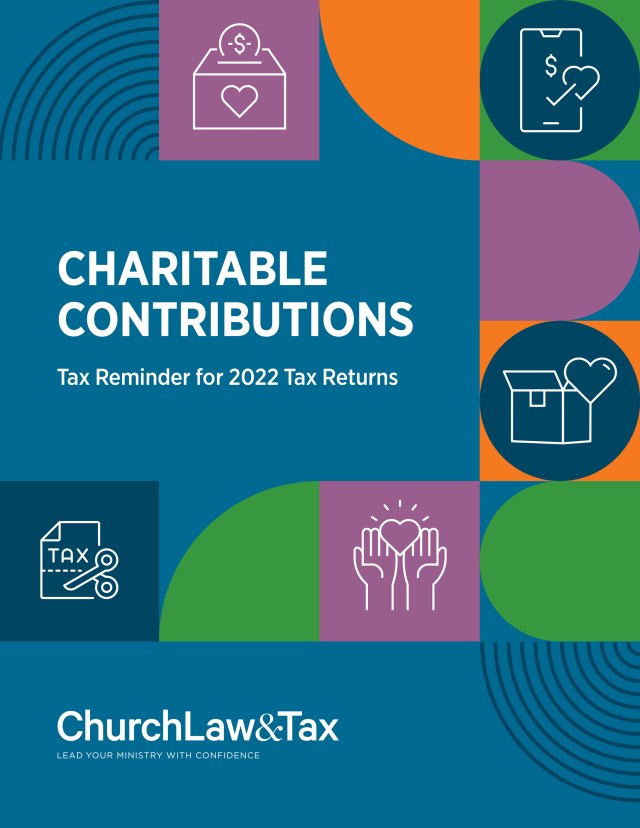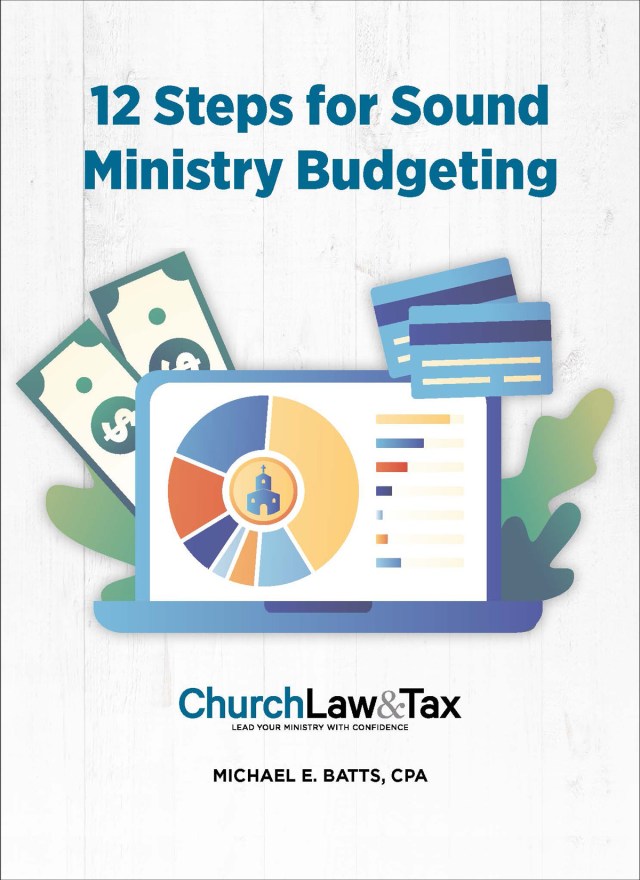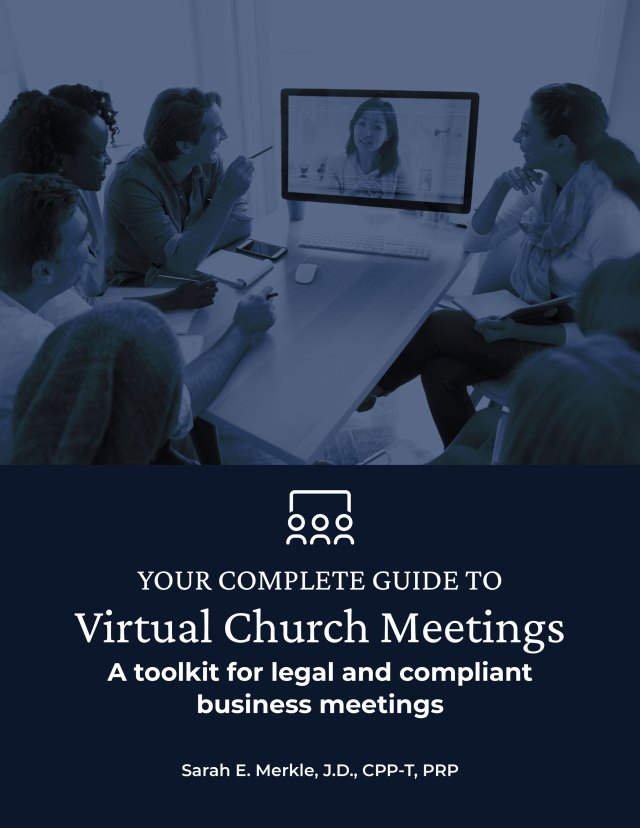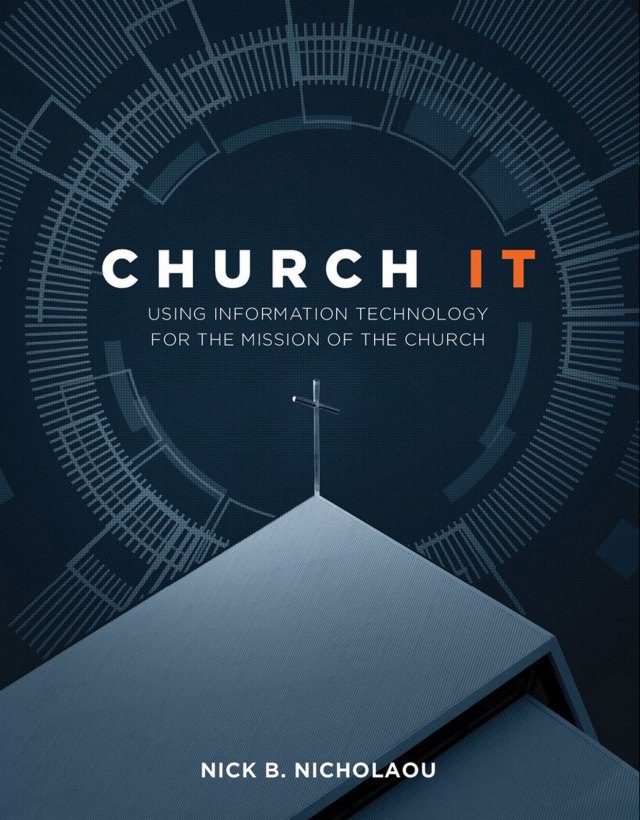During a normal Sunday morning service at a local church, while the congregation read the overhead screens during the sermon, someone in the congregation decided to check email. That church member’s smartphone synced with the church’s projectors and took them over. All of a sudden, the whole congregation was reading that person’s email.
“It was a glitch in the system,” said CPA Stan Reiff, a partner with the accounting firm CapinCrouse. The church shut down the screens and fixed a backdoor in the software. But the incident was a reminder, he said, of the blessings and challenges of modern technology.
The past 25 years have brought significant changes to how churches do business. Many have made life easier for church treasurers and other church leaders. But the changes have also brought new complications and challenges—here are five of the most significant.
Rapid changes in technology
Twenty-five years ago, churches had limited options on how to take in money and how to keep track of it, said CPA Vonna Laue, a senior editorial advisor for Church Law & Tax. Most of the tithes, offerings, and other donations came in by cash or check. Some churches had begun using spreadsheets or software like Quicken or QuickBooks to keep track of those funds.
Today, churches have a wealth of options, including fully integrated software packages that track giving, expenses, and other financial records—along with membership details and room scheduling. That’s made life easier, Laue said, because church leaders at even small congregations can readily access the data they need and create sophisticated reports.
And churches can easily accept electronic giving. “Twenty-five years ago, churches weren’t accepting credit card donations,” Laue explained. She said that a growing number of churchgoers are using ACH payments, texting, and other electronic forms of giving.
“Technology has significantly impacted how donations, tithes, and offerings are handled,” Laue said.
Tip. Churches should be cautious when it comes to choosing new technology, Laue said. Some staff or church leaders may have their favorite software, but that software may not be a good long-term choice for the church. Laue’s advice: Do your research ahead of time. Don’t rush out to buy the latest version of a program. And don’t think that new software will solve all your problems. “When you do that, you can trade one set of problems for another,” she stressed. (For additional guidance for software purchases, see chapter 6 in Church IT: Using Information Technology for the Mission of the Church by Nick Nicholaou.)
The rise of the Cloud
Closely tied to developments in technology, online options have radically affected the way finances and other business is conducted by churches.
Round the clock access to the internet has been a boon to churches, Reiff said. Pastors, church treasurers, and lay leaders can have access to financial information whenever they need it. And it’s easy to disseminate that information at the click of a button.
Using smartphone apps also makes it easy for churches to keep track of expenses. Rather than turning in paper copies of receipts, church staff and volunteers can take a photo of a receipt and file an expense report on their phone. Often those apps can be linked to the church’s general ledger, Reiff explained.
“No more worrying about lost receipts,” he said.
The rise of cloud-based applications, where the software and data are kept off-site, makes it easier for churches of all sizes to keep their financial records in an orderly fashion. Those cloud-based services often offer better cybersecurity than most churches could afford in the past. That’s important, Reiff said, because hackers target churches large and small for fraud—stressing the downside of an unprotected church computer network.
On a number of occasions, Reiff has worked with churches where a hacker has broken into a church’s email when their pastor is traveling—especially on mission trips. In one situation involving a traveling pastor, the hacker sent a fake email from the pastor, asking the treasurer to wire $10,000 for a mission project.
The treasurer was fairly new and was not inclined to question any of the pastor’s decisions.
“Fortunately this treasurer made a mistake when entering the routing number, so the transaction failed,” Reiff said.
After the pastor returned, the treasurer apologized for the delay in sending the funds. When the pastor looked confused, they both realized the request had been a fraud. This kind of situation is more common than you’d think, he stressed.
It also underscores an important point: Churches must be diligent about creating and enforcing policies regarding computer and internet use. Key decision-makers need to develop accounting and financial policies that deal with cybersecurity issues, said CPA Rob Faulk, a partner with CapinCrouse who spent about 15 years in church ministry.
“If hackers get into the network, they can get into your database,” Faulk said. He suggests that churches delete identifying information, like account numbers for donors, as soon as possible. And even the smallest churches should talk with a cybersecurity expert. “You may think, ‘We’re a small church and no one will bother us,'” he explained. “But hackers don’t care how small a church is.”
For help keeping your church and its finances safe, take a look at our recent work on the topic:
“Church Cybersecurity Starts with The Human Firewall” – (Sept., 2023)
“Hacking a Church is About Exploiting its Weakest Link” – (Sept. 2023)
On the positive side, the internet has made it easier for churches to keep in touch with and raise support for missionaries who are located around the world, Faulk said.
Tip. Rather than visiting a church while on furlough every few years, a missionary can visit with a church via live video conferencing during a service, said Faulk. It can be a major savings for any church budget. And in general, a church can also have direct contact on a regular basis with missions via video or email. When a mission trip team from the church goes out, church members can often get daily updates instead of waiting for the team to return.
People are working longer and seeking second careers
Churches have benefited from two major staffing trends in recent decades, said Laue. The first is that Americans are retiring later. In fact, the fastest growing portion of the American workforce is made up of workers 65 and older, according to the Bureau of Labor Statistics. And second, many older Christians who started out in the for-profit world have begun working for churches.
“We’ve seen a lot more of second career people come into the church—looking for work or volunteer opportunities that have more meaning,” Laue said. “And they’re bringing their business skills with them.”
Those changes have helped raise the competency of church administrators, Laue said. And despite the advances in technology, people remain a church’s most important assets, she added.
Tip. While often skilled in numerous business and financial areas, people coming out of the for-profit sector need training and tools that help them adjust and understand the unique aspects of a church and nonprofit organization. Take advantage of all the training that’s available for church treasurers and other administrative staff, said Laue. Groups like the ECFA and CapinCrouse offer training for church staff, often for free or at very little cost. Those can include webinars, podcasts, and local workshops. Also, find various resources for training staff at CLTStore.com.
The growing use and value of outsourcing
Twenty-five years ago, outsourcing was mostly for corporations and other for-profit companies, said Bryan Miles, cofounder of Belay Solutions—a company that provides virtual/outsourced services to churches, nonprofit organizations, and for-profit companies.
In recent years, outsourcing has found its way into churches. Along with often being less expensive than hiring full- or part-time on-site staff, many churches are discovering that outsourcing can fill specific employment needs—and do so with people who share a church’s values.
“We’ve worked with hundreds of churches and they are facing the same struggles that businesses face—finding the right people to help them fulfill their mission,” Miles said.
Steve Dawson, the president emeritus of Chicago-based National Covenant Properties, agreed. That’s why the Evangelical Covenant Church—the denomination National Covenant Properties serves—decided to outsource all the bookkeeping for its church plants.
“We’ve got a couple people scattered around the country who understand churches—and they handle 20 or 25 church plants at a time,” he said..
Those outsourced bookkeepers can help churches get their finances in order from the start. As a result, pastors can focus on building the congregation and not on making sure all the bills get paid and all the accounting is done. It’s one less thing for a church planter to worry about.
Like businesses, Miles added, churches are looking for skilled workers—and they have the same needs as businesses do. They’ve got to pay their bills, produce financial reports, schedule events, and communicate with church members and the public. But they are also looking for people who share the church’s beliefs. An outsourcing company like Belay can help a church solve that problem—by matching them with someone who has the right skills and shares their faith.
Miles stresses that outsourcing can be a huge help for small churches or churches in rural areas, where there’s a limited pool of candidates.
That’s especially true when it comes to payroll and bookkeeping, said both Dawson and Miles. Churches have some unique needs when it comes to their finances and not every community has people who understand how churches work. Using an outsourcing firm allows them to draw from a larger pool of potential experts.
Dawson stressed that churches consider using a payroll service whenever possible. Those services can file all the paperwork that churches need to file for tax purposes—and do so on time, he said. That’s one less headache for a church to worry about.
Outsourcing can offer pastors and other staff at small churches a sense of relief, stressed both Dawson and Miles. Rather than worrying about financial reports and procedures on their own, they can partner with an outside firm.
Tip. Make a list of the most essential tasks the church has to accomplish and prioritize them, Miles advised. Then think about which tasks would be easiest to outsource. And then do your research, he said, to make sure the company you’re thinking of working with has a good reputation and has experience with churches.
Updated accounting practices
For most of the last two decades, accounting practices for churches have remained fairly unchanged. However, the Financial Accounting Standards Board (FASB) released a new standard in 2016 that that could impact churches, said Laue.
This standard is required for churches that release external financial reports like audited statements, said Laue, and not for internal reports. But, she says, following the standard can be helpful for all churches.
One change has to do with designated funds. In the past, nonprofits like churches separated those funds into three categories in their external financial reports: unrestricted, temporarily restricted, and permanently restricted.
Under the new standard, those funds will be separated on external financial reports into two categories: without donor restrictions and with donor restrictions.
Again, “this is only applicable if you issue external financial statements,” said Laue. “It will not impact how accounting is done but the reporting will look different, especially if you have both temporarily and permanently restricted amounts because they will now be grouped together,” she explained.
Another key change: External financial statements need to include a liquidity disclosure, Laue explained. That disclosure, she said, could give church members a better sense of the church’s financial health.
“Even if a church isn’t required to make those disclosures, they’re helpful—especially so that the less financially savvy church members will know how well the church is doing,” Laue said.
Tip. Add a liquidity statement to financial reports, even if it is just for internal use. That statement would show the liquid assets the church has available to pay expenses. “It may be a very positive experience for church leaders to truly think about the financial position their church is in,” said Laue. (For more information on the FASB standards, go to capincrouse.com/preparing-fasb-financial-reporting-standards-changes.)

